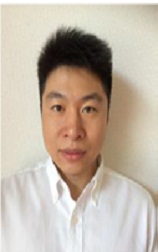| 个人简介 | |
|---|---|
 Jiangwei Liu National Institute for Materials Science,科学家 |
|
| 标题: Recent development for semiconductor diamond based MOSFETs | |
| 摘要: Diamond is a wide band gap semiconductor. It has some excellent basic physical properties, such as high breakdown field (~10 MV•cm-1), large hole mobility (3800 cm2·V-1·s-1), low dielectric constant (5.7), and high thermal conductively (22 W•cm-1•K-1). These properties make diamond suitable for the fabrication of high-power, high-frequency, and high-temperature electronic devices. Recently, diamond-based metal-oxide-semiconductor (MOS) capacitors and MOS field-effect transistors (MOSFETs) have developed greatly. They were fabricated on p-type boron-doped oxygenated diamond (O-diamond) and hydrogenated diamond (H-diamond) channel layers.1,2 Although thermal stability of the O-diamond is believed better than that of the H-diamond, trap charge density at insulator/O-diamond interfaces and leakage current density of the O-diamond based MOS capacitors are very high. It is still difficult to fabricate high-performance O-diamond based MOSFETs. On the other hand, many successful diamond MOSFETs were fabricated on the H-diamond channel layers. The H-diamond epitaxial layer has a high surface conductivity. The holes are accumulated on the surface with the sheet hole density of 1012~1013 cm-2. Notably, it was reported that the exposure of the H-diamond in NO2 gas could increase the sheet hole density of H-diamond significantly to be as high as 1 × 1014 cm-2.3 Therefore, it is promising to fabricate high performance H-diamond based MOSFETs. In this talk, the fabrication of H-diamond based electronic devices such as MOSFETs and MOSFET logic circuits will be demonstrated and discussed. | |
| 简介:
Jiangwei Liu is currently an Independent Scientist at Research Center for Functional Materials of National Institute for Materials Science (NIMS), Japan. He received his Ph. D degree from the University of Tokyo in 2012. He worked as a postdoctoral researcher at Wide Bandgap Materials Group of NIMS from 2012 to 2013. From 2014, he joined International Center for Young Scientists (ICYS) at NIMS as an ICYS Fellow. From 2016, he became an Independent Scientist at NIMS. He is an elected person of JSPS-EYR program (2016-2021), NIMS-ICYS program (2014-2016), and JSPS-GCOE program (2009-2012). He is presently interested in single crystalline diamond growth and diamond electronic devices.
| |
